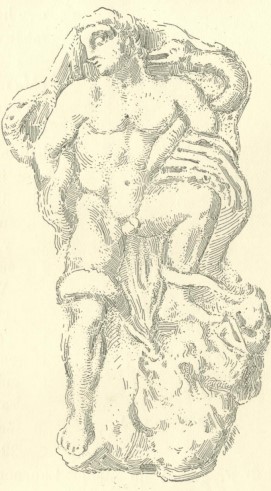Lezoux vases (2nd or 3rd centuries CE)

In 1903 Joseph Déchelette identified Laocoön in the pantheon of subjects used for the reliefs of five red-earth, sealed (i.e. with seals), Gallo-Roman vases from Lezoux. He dated these vases to between 2nd or 3rd centuries CE. The variations between them are minor and only signal a shared understanding of Laocoön iconography and the use of different moulds to produce the designs. The appearance of Laocoon on five vases from different moulds points to this story having been a popular vase decoration among the potters of Lezoux, since moulds would have been used multiple times.[note 1]
The five vases are as follows:
The decoration features various subjects, including animals, a Cupid, gladiators, Hercules, Bacchus, Gannymede, and, of course, Laocoön (see image above).
The four figures decorating the vase are Hercules, Laocoön, Venus, and a gladiator.
The three figures decorating the vase are Hercules, Fortune, and Laocoön.
This fragment shows only the lower part of Laocoön's body.[note 2]
Déchelette confidently claimed that the Laocoön figures on these vases are "sans aucun doute possible" replicas of the Laocoön figure of the Vatican statue. Yet he also observes differences, the most notable of which is that the heads of the serpents appear either side of Laocoön's head (rather than biting into the flesh of Laocoön and the left-hand son, as in the statue). Neither does the right-hand son appear to be attempting to escape (as he does in the Vatican sculpture).[note 3] Déchelette's confidence that the Vatican group is the "prototype", then, seems misplaced. What is more likely is that a prototype— one predating these vases, the Vatican group, and the Etruscan scarab of the 4th century BCE— fostered a common conception of Laocoön visual iconography that long outlasted it.
Note 1. Joseph Déchelette, "Un Relief Céramique de Lezoux Emprunté au Groupe du Laocoon", Revue Archéologiquehttps://www.jstor.org/stable/41743475. Déchelette dismisses as several other proposed identifications of vase decorations as Laocoön, identifying them instead as Hercules. [back to text]
Note 2. Déchelette, pp. 391–92 [back to text]
Note 3. Déchelette, pp. 390 and 393. [back to text]
Resources available


